Blog • Understanding Publishing
Last updated on Sep 03, 2025
How to Publish a Book in 7 Steps: An Author's Advice
Savannah Cordova
Savannah is a senior editor with Reedsy and a published writer whose work has appeared on Slate, Kirkus, and BookTrib. Her short fiction has appeared in the Owl Canyon Press anthology, "No Bars and a Dead Battery".
View profile →This post is written by Angela van Liempt, author of the Atlas Cliffs series and the upcoming romance novel, Shattered Secrets Between Us.
When I set out to publish my first book, Wandering Souls, I knew I had a lot to learn. But navigating the publishing process myself turned out to be an invaluable education! I’ve since gained so much knowledge about how to write a book I’d love to read, attract new readers in addition to my baseline fans, and test different strategies to get more downloads and sales.
My first book came out in 2022; today, I’ve published four books total in the YA paranormal romance genre. I also have a new novel forthcoming in the romantic suspense/mafia romance genre. At the time of writing, I’ve gotten around 50,000 digital downloads of my YA series (free promotions and sales combined), and even sold hundreds of physical copies through Amazon and in bookstores.
In this post, I’ll show you what I did — in hopes that my publishing journey can help you, too.
Here’s how to publish a book in 7 steps:
1. Commit to finishing the draft
Wandering Souls came about because, simply put, I wanted to write a book. In 2019, I signed up for a writing workshop where we would submit 2,500 words each week — ultimately producing a full-length novel.
At first, I honestly wasn’t sure I could do it. What was I supposed to write about; how would I write that much? But on the advice of a fellow student, I started with something simple: a quote. I happened upon these lines, from Edgar Allan Poe’s short story “The Premature Burial”:
The boundaries which divide Life from Death are at best shadowy and vague. Who shall say where the one ends, and where the other begins?
From there, I dove deep into the world of paranormal fantasy, building everything around my main character — a young woman who can see beyond the veil separating life and death.
Q: What advice would you give to someone who wants to become a full-time writer?
Suggested answer
Write. Write every day. Work on your craft. Join a writers group and share your writing with others, get feedback, and provide feedback on their writing.
Writing is like exercise. You have to work on it consistently and build it up over time.
Maria is available to hire on Reedsy ⏺
Ensure your concept is rock-solid
Now, if you’re looking to publish successfully, your core idea must be strong; it should evoke emotion and engage people right away.
I knew my protagonist’s name would be Drew Harlow, she would be a senior in high school, and she would be able to see the “wandering souls” of the dead. From this, I spun a story about what happens when Drew’s boyfriend dies in a tragic accident… but for some reason, she can’t find his soul. So is he really dead — or is something even darker and more sinister at play?
Q: How can I overcome the fear that my story idea isn’t original or good enough?
Suggested answer
It's easy to walk into a bookstore, pull a finished book off the shelf, read it, and think, "Oh no. I could never write a book like this. I'm not good enough to be a writer."
This kind of thinking is a trap! As an editor, I've read hundreds of early drafts. Even the most exciting, most polished manuscripts that passed my desk needed several rounds of intense editing before they were ready for publication. And I was often seeing manuscripts after they had been through a few revisions already. It's not fair to compare your first draft to a published book that's been through many rounds of professional editing. Everyone's first draft needs work. If you expect your first draft to be on the same level as a published book, then you're going to set yourself up for a lot of self-doubt and disappointment.
However, when you pick up a book and think I could never write this, that's actually true. Not because you're a bad writer, but because your voice is uniquely and distinctively yours. You won't be the next Rick Riordan or the next Angie Thomas--but that's because you're going to be the next you!
Camille is available to hire on Reedsy ⏺
Even seasoned authors struggle with imposter syndrome and doubt themselves. That said, doing your homework is not a bad idea. Find out what books are similar to yours and find out if there is a glut in the market for that topic or if there is a need or hole in the market, and your book might fill a need.
The reality is that good books are not written; they are rewritten. That's why it is so important to work with an editor who can help you revise the book and take it to the next level, so it can become the best it can be.
Melody is available to hire on Reedsy ⏺
You don’t have to start with a character, like I did, but I do find it helps ground the story. As I developed Drew’s character and her motivations, I got a much clearer sense of my novel’s arc. To do the same for your own book, consider the following questions:
- What is unique about the world of this story, and/or its narrative POV?
- What does my main character want; what is standing in their way?
- What stakes will arise as they pursue their goal(s)?
Think about your book’s “vibes”
In addition to plot, it can also be useful (and fun!) to think about your book’s intended atmosphere or vibes. Wandering Souls, for example, was inspired by my love of paranormal shows like Ghost Whisperer, The Vampire Diaries, the Sookie Stackhouse series, and the mysteries of Nancy Drew.
I knew I wanted a “witchy” atmosphere and a compelling female protagonist like these stories had; my protagonist, Drew, wasn’t intentionally named after Nancy Drew, but it’s a fitting moniker.
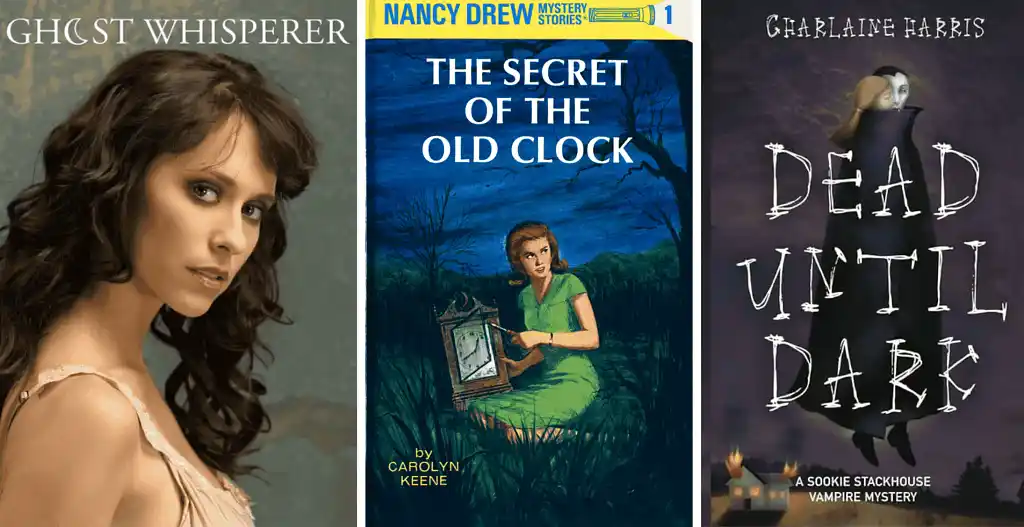
In any case, consciously or subconsciously, these stories became a part of my novel — which I finally finished in the summer of 2022. The next step was figuring out which publishing path I would take.
2. Choose between self-pub and trad pub
Back in early 2021, I had taken a deep dive into traditional publishing. I thought about querying agents, going on submission, and hopefully getting picked up by a publisher. But I decided that I didn’t want to wait for someone else — an agent, acquiring editor, or what have you! — to decide if my story was worth sharing with the world.
Q: Do you have any words of encouragement for authors struggling in the querying trenches?
Suggested answer
First of all: don’t give up. Rejection isn’t the end of the story—it’s part of it. Every “no” is simply a redirection toward the right “yes.”
Publishing is absolutely a business, but it’s also deeply relational. Editors and agents love working with people they genuinely like and trust. That means: go to writers’ conferences. Join a critique group or hire an author coach. Get to know professionals in the industry, not just for what they can do for you, but for how you can show up as generous, authentic, and collaborative. You never know when a writer friend might one day endorse your book, or when a connection you make over coffee might become a career breakthrough.
And here’s the bigger truth: querying is more than chasing contracts. It’s also a personal growth journey. You’ll discover your resilience, refine your craft, and grow into the writer you’re meant to be. One author I know literally turned her pile of rejection letters into a lampshade and said they helped light her way to publishing three novels.
Need more inspiration? Catherine Stockett, author of The Help, was rejected by 50 agents before one finally said yes. That “yes” led to a book deal, a bestseller, and eventually, a movie.
So hold fast to your dream. If you feel called to write, you probably are. Keep writing. Keep connecting. Keep becoming the kind of author people want to root for. The path may be long, but you’ll be stronger, wiser, and more yourself because of it.
Alice is available to hire on Reedsy ⏺
Querying can be emotionally challenging and overwhelming for authors. Once you're in it, you're amongst a sea of probably tens of thousands of other authors at the same time, and there are, of course, only so many agents and agencies out there. Truthfully, the odds are not great; an agent will sign only about 1-3% of the authors they come across in their queries. This is why the query must be in tip-top shape: a query's only job is to make the agent curious enough to ask for pages. Then, they have to fall in love with the pages (the writing and the story, which are two different things) and have a vision for it in the current market.
If you go into it with the right mindset, it can make it easier. Expect to receive many passes; it's inevitable in 99.9% of cases. Your story isn't for everyone; no one's is. And there are so many reasons an agent might pass. Try not to take it personally; if they pass, then they were not the agent for you. You have to have thick skin though. Not every agent will reply, and if they do, they may give feedback or a reason they're passing or they may not. It's hard not knowing, but there's not much you can do about it. Agents are not paid for the time they spend on queries, and their top priority is the clients they already have, so unfortunately, queries often fall to the bottom of the priority list. And because we receive so.many.queries, it's very difficult to stay on top of them all. We simply don't have the time to respond to everyone. All you can do is do your best; ensure your query is spectacular so that it stands out, your pages are spectacular so agents see it as ready or nearly ready for submission to publishers, and research the agents and agencies first so you know you're shooting your shot with the most appropriate people in the industry. Follow their submission guidelines, don't cheat, and be friendly and professional. Get several pairs of fresh eyes on your query so you know it contains all the necessary elements (and doesn't contain anything that shouldn't be in it) as well as your manuscript, and make sure everything is ready before you begin querying. Being prepared says a lot about your work ethic, which is important to agents as well
It sounds cliche, but the only difference between those who find representation and those who don't is that the authors who found representation didn't give up. It takes patience, persistence, and perseverance. And it may not happen with your first completed manuscript, or even your second or third--but if your goal is to find an agent and be traditionally published, keep going. Keep learning, keep trying, keep connecting with other writers and industry pros. You've got this!
Kathleen is available to hire on Reedsy ⏺
Don't be afraid to tear up your query letters and start again. Be aware of the time of year -- you may be going 24/7/365 but agents and publishing houses don't do that. Check out Writer's Digest articles on query letter writing and examples of winners and losers. Check out Query Shark. Understand the different agent types and editors at small presses -- different query styles may be required. Send queries out, mark the calendar 4 weeks from that date, and forget about them until then.
Query letters are not a sales letter about you -- you love your book, your letter needs to make anyone want to love your book as well. :O))
Check out writing blogs/websites such as those of folks like Anne R Allen or Janice Hardy -- or any author you admire -- their tips on query letters may include something you've never considered.
Start your next book... c'mon! You might be surprised what's waiting to pop outa your head!
Maria is available to hire on Reedsy ⏺
Querying is so tough these days! There's more agents than ever before, but yet imprints are folding, combining, etc. so the number of projects being sold hasn't increased, making it harder to catch an agent's eye.
There may be any number of reasons you're not getting full requests--your query letter doesn't capture the unique quality of your book making it stand out, your first pages fall flat and don't pique the agent's interest, or, quite simply, the agent isn't interested in your characters or plot. And there's nothing you can do about that last one. Every book isn't for every person. Every agent has meh topics they rather not read about. If an agent isn't into mermaids, they're unlikely to request a full from a query that describes a book about mermaids. That query was never going to land a full, and there was absolutely nothing about the query or your writing that could have changed that.
So, concentrate on what you can control and push aside the rest. Querying is not a comment on your worth as a human or as a writer. Publishing is a fiesty marathon. If your current project isn't getting bites, write the next thing. You'll improve with each project. Trust that the stars will eventually align when your idea and words will pack a punch. How can you make your project stand out as unique? What tropes can you put a spin on? Create characters we can't help but root for. Lean into what you--your background, your hobbies, your experience, can bring to a project that springs it to life in a way that can't be replicated.
But above all, know that it's not just you--the struggle is real for many, and the only thing you can do is simply keep writing.
Kim is available to hire on Reedsy ⏺
Don't lose faith!
I know that's easier said than done but try not to let rejections get you too demoralized. Most best-selling authors had the same struggle and likely went through many rejections before securing a deal. Unfortunately, it's all part of the process.
If you are getting form rejections then it is likely you are either choosing the wrong agents or there are issues with your query pack, so make sure you put as much work as possible into researching who you want to pitch to and refining your documents. Don't rush into querying. This is your one shot to catch the attention of that agent, so you want to get it right.
If you are getting requests for your full manuscript then you are likely on the right track and have a good submission pack. Don't be afraid to ask for feedback, but agents are very busy so you may not always get it.
I would also encourage you to keep writing while querying. Authors often get their second or third book picked up instead of the first one they queried, so don't lose hope. If you are tired of the rejections then use any feedback you have been given to write something new. There are no guarantees, but keep working at it and hopefully you will find your perfect agent eventually.
Finally, be kind to yourself. A rejection doesn't mean your book is rubbish - it just means that the agent can't see a place for it at this point in time. Many, many, many brilliant books have been turned down initially and then had great success when they found the right home. Don't give up hope.
Amy is available to hire on Reedsy ⏺
I also knew that my publishing route would affect the editing process for my book. Traditional publishing means working with an in-house editor after they’ve acquired your book, while self-publishing requires you to do the edits yourself (or hire someone to do them). So I basically had to decide whether I would publish independently or traditionally before I got too far into editing.
Why I decided to publish independently
I chose self-publishing primarily to retain control over my timeline. But there are a number of other reasons to publish independently as well:
- 🎨 More creative freedom (you make the final call on all aspects of your book);
- 💰 Better royalties (up to 70% of your list price, as opposed to 5-10% with a publisher);
- 📜 Having full rights to your story (if you ever wanted to take it down, modify it, or even sell it someone else, you wouldn’t face legal issues); and
- 📚 Guaranteed publication (not only can a publisher delay your book’s release date, but on rare occasions, they can shelve it entirely — an author’s worst nightmare!)
I’ve also come to treat indie publishing like the business it is, rather than a hobby. This means investing time and money to a) absorb as much information as possible about writing and publishing, and b) pay for professional editing and design services, maximizing my chances of success. And for me, the more I invest, the more I get out of it!
That said, self-publishing isn’t for everyone. If you’re still on the fence, I’d recommend reading this article on self-publishing vs traditional publishing to help you decide. I’ve also pasted an infographic below, comparing the relative advantages of self-pub vs. trad pub:
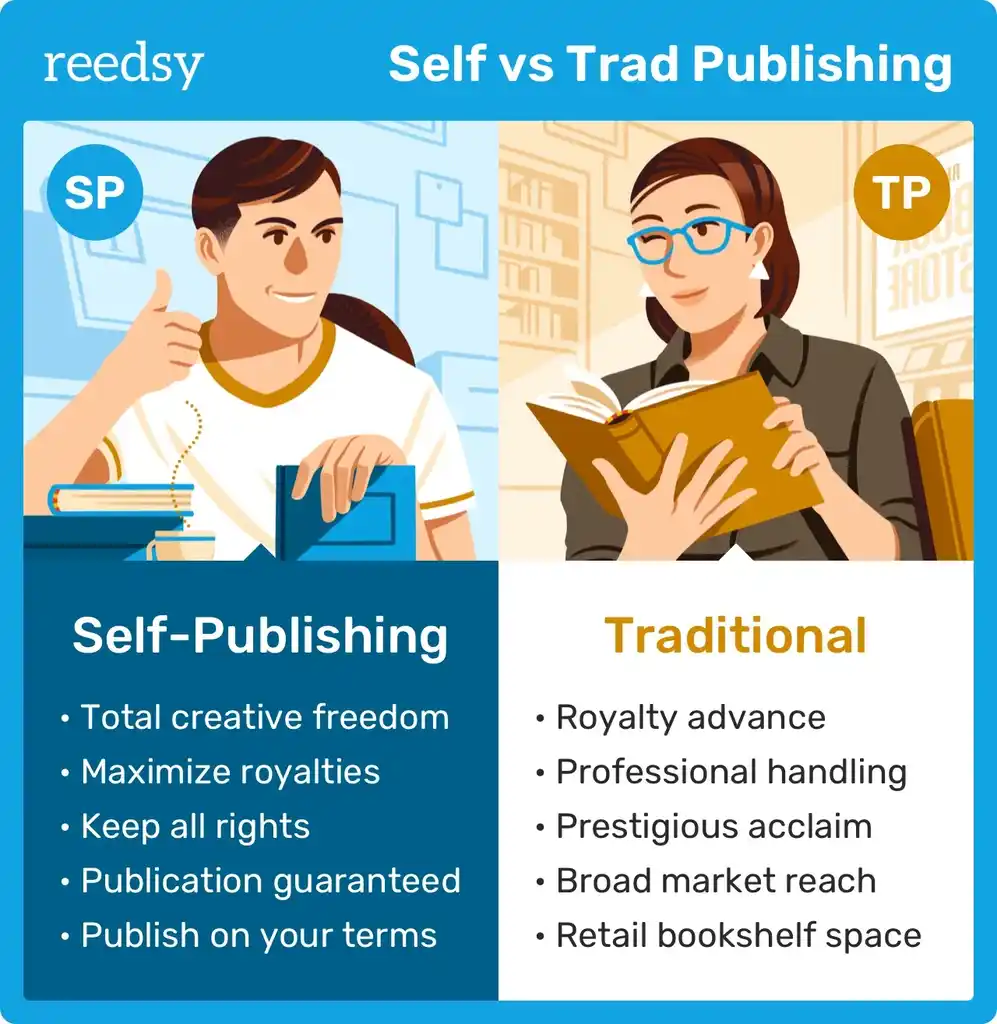
But let’s get back to Wandering Souls. Having made the decision to self-publish, I was ready to throw myself into editing!
3. Edit your manuscript thoroughly
To give a full overview of the editing process, the earliest edits on Wandering Souls actually came from that writing workshop. My classmates served as great sounding boards, and I soon started working directly with the course instructor. He was basically my developmental editor, helping me work out “big picture” issues — such as character dynamics and plot holes — while also improving my writing skills overall.
Q: What should clients expect in terms of feedback and revisions during a developmental edit?
Suggested answer
With a development edit, what I'm giving you is a full health check and service of your novel. This is a close, hands-on edit of your story, focusing on narrative development, characterisation, dialogue, story-telling, and the clarity of your authorial voice and your prose. Essentially, my aim is to help you get the best out of your novel and give you the best advice possible. With several decades' experience working in genre publishing, I have an excellent idea as to what markets are out there and where to best place your novel.
You can expect to receive the edited novel with my changes tracked and comments included. Through the tracked changes you will be able to see my advice on what you can change and consider in revising your novel. I always track changes, as a development edit is a collaboration with the client. I'm using my extensive experience to make judgements on what works and what doesn't, but at the end of the day you have to be happy with those changes, and that they are true to your vision for the work.
As well as the full edit, I also provide my clients with a copy of the chapter and style notes I make as I edit. These are an immediate record of my process, showing my thoughts on each specific chapter. Clients also receive an editorial table, which is what I use to keep track of the spelling of names, unusual/unique terms, and places in the novel, as well as keeping track of essential characteristics, such as hair colour. I also provide my clients with a book report. This is an overview and analysis of the novel, detailing my key findings and suggestions as to revisions the client can consider and what next best steps they may also consider.
Finally, I offer to follow up with my clients in a one hour Zoom or Skype call, which is their opportunity to ask me any further questions they may have, as well as to discuss my edits in detail.
Jonathan is available to hire on Reedsy ⏺
I define a developmental edit as a comprehensive review of a book’s strengths, weaknesses, and opportunities for revision. With your manuscript, I’d read it and consider its pacing, plot, character development, voice, and other building blocks of storytelling. After reading the draft, I’d deliver to you a detailed editorial letter (no shorter than 3,000 words). The other "deliverable" from this service would be a detailed annotation of the manuscript. Using Track Changes, I would point out in-text examples of what's working, what's not, and potential paths forward as you continue shaping the manuscript. I find that this tool can be especially helpful for authors who want specific examples identified for them throughout the text. My expectation is that these two deliverables can help you improve the current manuscript while also adding to your knowledge base long-term. Hopefully, they’ll be resources you can revisit again and again.
Kevin is available to hire on Reedsy ⏺
A nose-to-tail structural edit of your manuscript for authors who have taken their book as far as they can by themselves.
- Detailed recommendations to improve “big picture” concerns like characterization, plot, pacing, setting, etc.;
- Specific guidance on elements of writing craft;
- In-line suggestions and edits in the manuscript.
Brett is available to hire on Reedsy ⏺
A developmental edit includes an analysis of what is working and what still needs to be improved regarding big-picture issues like pacing, plot, clarity, setting, telling vs. showing, character development, etc. I provide suggestions for improvement directly on the manuscript using track changes in Word. I also include pages of editorial notes regarding what still needs to be improved and I provide suggestions on how to improve these issues. I am also always available for Zoom chats before, during, and after any edits are provided. And clients may contact me at any point in the process regarding any questions or concerns, even after the collaboration has officially ended.
Melody is available to hire on Reedsy ⏺
My developmental edits include two parts: line notes and a letter.
The line notes point out any strengths or issues that arise as I read. For full-length books, generally, these line notes will even out to about 1-2 per page, though some pages may have none, and some pages may have many, as needed. For shorter pieces and picture books, I typically include many more line notes per page, depending on what is needed. When I notice a repeated problem, I discuss it in my overall letter rather than commenting on every instance. These line notes are meant to educate authors and help them become better writers, not "fix every error" as a copy edit would.
For full-length books, for the letter, I normally include:
- An introduction discussing the book's high-level strengths and opportunities for improvement.
- Sections discussing structure/plot, character, setting/worldbuilding, romance if applicable, target market (age category, genre, and comp titles), title, and style.
- A conclusion with key next steps to focus on for the book.
These letters are lengthy, generally in the ballpark of 3,000 words (10-ish pages), and come with a table of contents.
My letters for shorter pieces and picture books are shorter and less formal, though they include roughly the same sections.
My developmental edits also include back and forth via message for 6 months after the project is complete. I love to brainstorm and talk through issues!
Tracy is available to hire on Reedsy ⏺
My next step was to hire a copy editor to make sure my words were as effective as possible. I found a wonderful copy editor in Kayla Ramoutar. In addition to direct copy edits, she also provided commentary and reaction notes on my manuscript — which I’ll go into more below.
Editing for dialogue, atmosphere, and more
Kayla was particularly helpful for:
💭 Fixing my protagonist’s inner monologue – In early drafts, my MC was constantly asking herself questions, and it was taking readers out of the story. Kayla helped me refine and reduce these questions, turning them into more “thinking” statements, and varying the tone and sentence structure to reflect her changing moods.
🗣️ Contextualizing character dialogue – I’ve also come a long way with dialogue since Wandering Souls. Back then, Kayla and I gave my dialogue scenes more context by adding more action beats about what the characters were doing, as well as sprinkling in more setting details so readers wouldn’t get “lost”. Nowadays, I love writing dialogue — especially in a flirtatious, banter-y context.
🦇 Building atmosphere in my story – I pride myself on my ability to cultivate atmosphere, and Wandering Souls and its sequels have a decidedly “Gothic” feel. Kayla helped add to this by suggesting eerie, evocative phrasing, using gloomy or dramatic weather during important scenes, and balancing description with action to get the pacing right. Today, the atmosphere of Atlas Cliffs remains one of readers’ favorite (and most commented-on) parts of this series!
Q: How do you adapt your editing approach to different genres and client expectations?
Suggested answer
Re. client expectations, before the work, practical goals need to be established.
I spend a lot of time with clients before offering bids, a lot of time. Call this free consultation if you wish, but since most of my clients don't know that they're about to step into the deep end of the pool, I think it's only fair that I warn them about the depth, as well as the shark infestation.
Dealing with different genres is a completely different issue.
Now, whether the book is humorous, horror, fantasy, adventure, sf, romantic comedy, or a mashup of two or more, I work with my clients to establish practical publishing goals (finding a publisher or self-publishing), and that sets the yardsticks for me to determine whether or not they measure up.
I'm personally comfortable with each of the genres I noted above, but if a client came to me with a genre-bending bodice-ripping romance, I'm probably not the right guy for the job.
Lee is available to hire on Reedsy ⏺
I work on picture books, novels, memoirs, and non-fiction, so I have a lot of different approaches in my pocket, ha. For picture books, it is much easier to do multiple rounds of edits, and most of my clients choose a multi-round package. That means I move from overall feedback down to line notes as the project progresses. I try to take a similar approach to longer projects, though I don't always get to see more than one draft. I'll often include taking a second look at a short excerpt--normally the beginning--in my editing package.
In term of client expectations, if I've done my job well, these will be clear before we even start working. I am constantly tweaking the language in my sales messages and offers to clarify issues that have come up with clients in the past. I am fairly flexible in changing my approach depending on how the client likes to work. For example, one client of mine prefers to talk through all of the changes in her picture book on the phone. That's pretty rare these days, but it works great for her, and we have a lot of fun on our phone calls!
Tracy is available to hire on Reedsy ⏺
Each genre has an expectation from readers, so I edit according to the target audience and what they will expect based on the genre, title, and type of book, whether it is for children or adults, non-fiction or fiction.
Non-fiction readers of self-help, for instance, are looking to grow and learn. So I will edit this type of book for clarity, pacing, and whether or not it provides new information for readers that they are eager to learn. These types of books must also have strong takeaways and practical applications, since readers expect this from this genre.
A historical novel, a fantasy novel, or a sci-fi novel will need to allow for strong world-building. This is needed more so than in a novel that takes place in the present day.
So, having experience editing these types of books and keeping reader expectations in mind is what is needed here.
Melody is available to hire on Reedsy ⏺
I find it really helpful to get a good sense of where the author wants their book to sit within the existing market. I like to ask them about who their target reader is, and what other books their target reader enjoys reading. Knowing that an author wants their thriller, for example, to sit on the more literary side of the market can really help guide my edits, and I can explain why I have made certain suggestions. Sometimes the process works differently, and I'll recommend a range of books I think the reader might find helpful to read, and they can tell me where they'd ideally like their book to 'sit' within that range.
Thalia is available to hire on Reedsy ⏺
This is done in two ways, I think. The first is doing an adequate assessment of the manuscript to determine what edit the manuscript needs and what level: heavy line edit? Light developmental edit? Copy edit? Second, it's important to be clear in your offer to the writer about what your editorial plan is. A copy edit, for example, will include ensuring accuracy, consistency, completeness, and correctness, in accordance with Editors Canada's standards. If these terms are outlined in your offer, and your offer is based on some careful thinking about the manuscript's needs, it should be easy to meet the expectations since you set them yourself!
An important asterisk to this I suppose is making sure there is good professional chemistry between editor and writer. Hold a virtual meeting; get to know each other, if only briefly. It's worth it to put in this extra (yes, unpaid) time.
Holly is available to hire on Reedsy ⏺
Lastly: one thing I’ve noticed after writing five books is that, when writing or revising, you often have a “gut feeling” about what will work. The right editor will help you articulate and execute your goals — but remember to listen to that little voice.
4. Get a genre-friendly book cover
My manuscript had been through multiple rounds of editing, and the text was publishing-ready! Now I needed a professional cover design.
Doing market research
To kick things off, I did a ton of market research in my genre. I was familiar with the big paranormal/urban fantasy books of the 2000s, like Kate Daniels, Mercy Thompson, and the Vampire Academy series; I also pored over Cassandra Clare’s books. I wanted a few newer points of reference as well, and was particularly taken by the covers for An Ember in Ashes by Sabaa Tahir and Legendborn by Tracy Deonn.
Looking at these covers, you can see what they have in common:
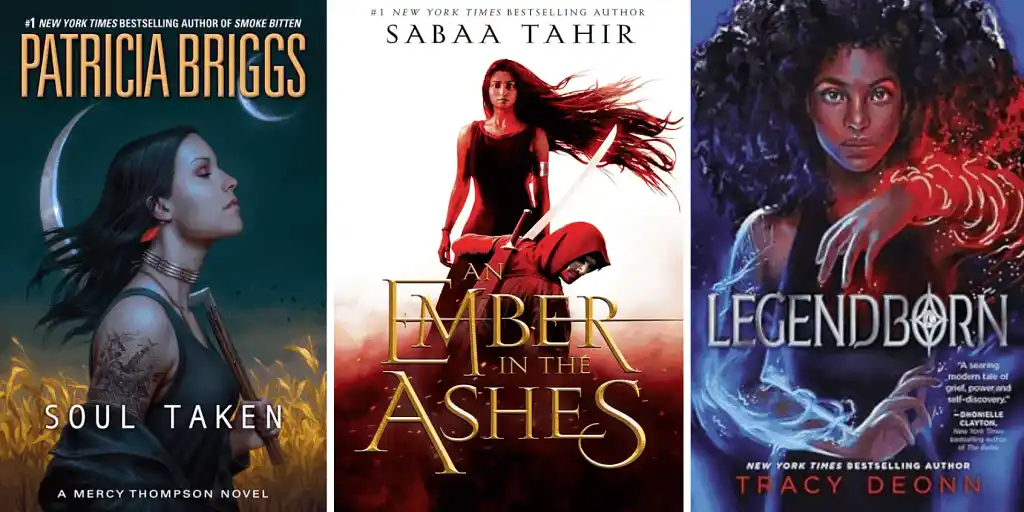
They tend to prominently feature the (female!) main character on the cover. What’s more, she often has her hair swept up in a mysterious, dramatic sort of wind — complete with a “magical” atmosphere around her. Bingo! I would do the same with my own cover design.
Next up, I had to find the designer for the job. After a bit more research, I reached out to Natasha MacKenzie, who’d done some brilliant character-based covers — like this one for a Firefly tie-in novel and this one for a Batman/Harley Quinn novel.
Q: How do you best work with clients to capture their vision for their book cover?
Suggested answer
Firstly, always listen to what the client is saying and - read between the lines - what do they really want. Read the brief. Then read it again. I don't just slavishly give the client exactly what they ask for. They are paying me for my expertise. So I will consider what they want to achieve (which is usually different than what they initially want to see). Then I will come back with ideas that will achieve their aims. Its a bit of back-and-forth between me and the client until we align on the final cover. Clients tell me all the time, they could never have expected the final cover to look how it does, and how thrilled they are with the result. Sometimes a client will come with a firm idea or element. If that serves the book then great, I will incorporate it in a way that optimises what the cover needs to communicate. Its ultimately about communicating clearly with the client.
Wayne is available to hire on Reedsy ⏺
The best way to capture a client’s vision is to start by asking lots of questions. I like to find out not just about the story, but also about any concerns or fears they might have, what they do and don’t like, and how they want the book to feel on the shelf. Sometimes a video chat helps enormously to get a sense of their taste and personality.
If a client has a specific idea, I always do my best to use that and make it look professional. If I think the project could benefit from a different approach, I will suggest alternatives, but always as part of a collaborative discussion.
Stage one of my process is research and idea generation. I play around, try out unusual or even odd concepts, and see what comes from that experimentation. With every idea I present, I include variations in colour, composition, or typography so the client can see the possibilities.
Many authors actually do not know exactly what they want, and that is great too. In those cases, I cast my visual net wider, presenting lots of ideas and styles to see what resonates with the book. Once we have settled on a direction, the refining and to-and-fro can take several stages to resolve. Getting every detail right on the spine and back cover is equally important. From there, we work together to shape a cover that is both creatively exciting and commercially strong.
Clare is available to hire on Reedsy ⏺
Communication is key. Asking questions and asking for examples of favorite covers is a start.
After that I like to send a few different concepts. I like to make it clear that the first round is still like a shot in the dark and work in progress. Specially when the client is not sure what they want. The best way to understand what a client expectation is, for design and style, is to send a few different options first and start working from there.
Veronica is available to hire on Reedsy ⏺
I told her I wanted to feature my own MC, Drew Harlow, on the cover of Wandering Souls. We started going back and forth on ideas: how Natasha would portray Drew’s fiery red hair, which market influences were the most relevant, and so on.
Nailing the final cover
Natasha and I had a design breakthrough when I sent her the cover for the 2015 video game Life Is Strange. I hadn’t played the game myself, but I loved the cover art: the haunted look of the female MC, the way she’s gazing out at the viewer, and how the designer uses shadows to hint at a lurking darkness.
With this concept in mind, it didn’t take Natasha long to perfect the cover for Wandering Souls. You can definitely see how the Life Is Strange artwork influenced the final design:
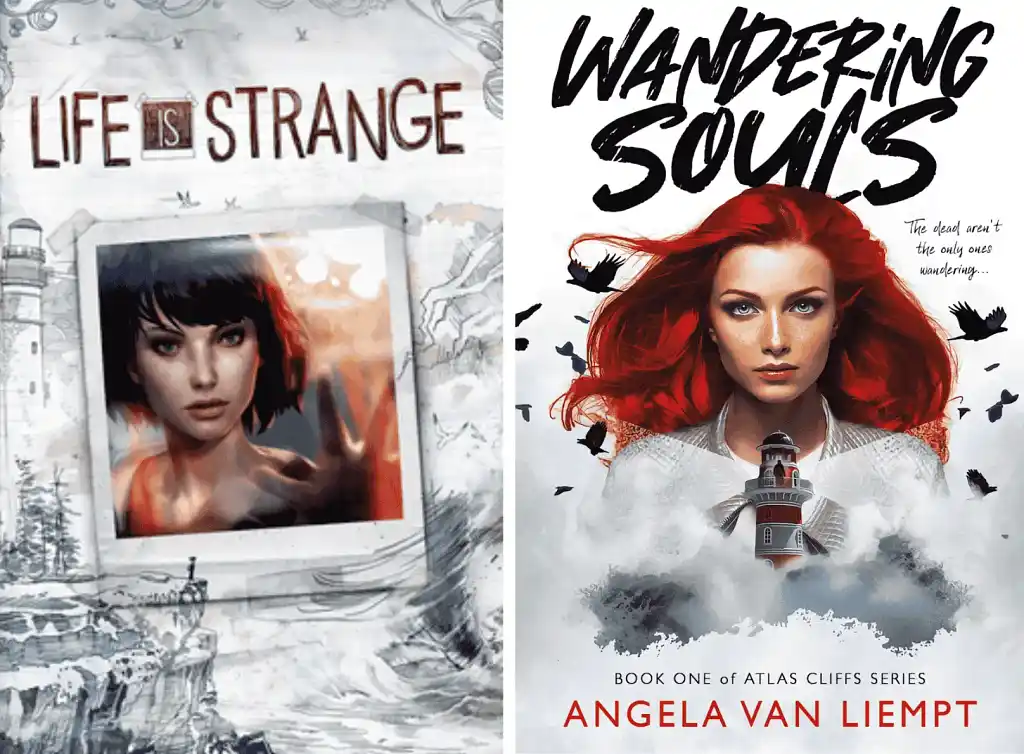
They even both feature a lighthouse!
Throughout this process, Natasha and I had a fantastic working relationship. I collaborated with her on both Atlas Cliffs sequels as well, Seeking Haven and Braving Storms. Those covers were smooth sailing (no lighthouse pun intended!), as we’d already landed on the essential aesthetic and Natasha just had to tweak it a bit.
Q: What factors do you consider when calculating your rate for a book cover design?
Suggested answer
When I calculate my rate for a cover design, I take into account the tools and time required to achieve the final result. Most of my recent covers are created using 3D software combined with Photoshop for digital painting, retouching, and fine adjustments. Working in 3D allows me to avoid relying heavily on stock photos, which gives authors more unique, customized visuals — but it also means the process can be more time-intensive than a photo-based cover.
My pricing reflects the hours it takes to model, render, and refine a scene, along with the additional cost of purchasing 3D assets when needed. I also factor in the creative scope of the project, the number of revisions, and the level of detail the story requires visually. All of these elements ensure that the final cover not only looks striking but also fits the market and communicates the essence of the book effectively.
Alexandra is available to hire on Reedsy ⏺
If we are talking about a full color cover illustration I start with a flat rate for most quotes. This rate is calculated on many things, including, in no particular order: time, comparing market rates, my skill and experience, and rights I am agreeing to sell. I compare this against other things like complexity, exposure of images, any extras the client may be asking for including additional rights. I am also keeping in mind how this will translate to an hourly rate.
I have found that there is a fairly clear link between how much I charge and the quality I produce, which comes down to time. I like to read as much of the manuscript as the client will give me, ideally the whole book. If we add up reading the book, sketching and ideating, communication and negotiation with the client, assembling reference and photoshoots, painting the illustration, revisions, type and cover design, assembling the final files, billing (which Reedsy takes care of) and back end business organizing, then divide that by the total cost we get a rough hourly. This informs how many jobs I need over a given time.
In an ideal world I would work on an image until it’s done. In a world with deadlines and money, the more I charge the fewer jobs I need to work on at once and the more time, love and attention I can devote to the task at hand, which, for me, always yields better results.
Charles is available to hire on Reedsy ⏺
When I price a cover design project, I think about the overall workload. Is it going to be a simple design with strong typography, or something more involved with custom illustration or heavy photo work? I also look at the research and creative time it’ll take to land on a concept that feels right for the story and the market.
I factor in the practical side too — like prepping files for different formats and making sure they’re print ready. And of course, the amount of collaboration and revisions an author expects can change how much time I’ll need to put in.
It comes down to the mix of creative effort, technical work, and how much back-and-forth is needed to get the perfect cover.
Roderick is available to hire on Reedsy ⏺
A fee for a book cover depends on several project-specific factors. The main things I always consider are:
- Scope of work
- Front cover only, front + back + spine, or full jacket.
- Title layout and typography or illustration only.
- Multiple sizes/versions for different book formats
- Concepts and revisions
- How many distinct cover concepts you want.
- How many revision rounds are included. More concepts and revisions increase the price.
- Complexity and style
- Highly detailed art, many characters, complex scenes take more hours than a simple illustration.
- Rights and licensing
- One-time personal use, a limited exclusive license, perpetual rights, or a full buyout. Duration, print runs, territory and product types all affect the fee.
- Deliverables and file prep
- Print-ready PDFs, alternate crops, font handling, color conversions and work-in-progress images for marketing are billable.
- Turnaround and rush fees
- Tight deadlines require reprioritising my schedule and cost more.
- Client type and opportunity
- Trade publishers, self-publishers and projects offering strong exposure can be priced differently.
- Extra costs and risk
- Font licenses, platform fees, taxes and production risk are considered.
- Time and opportunity cost
- How many hours it will take and what other paid work it might replace.
Based on that, a simple pricing formula would look like this:
Estimated hours x Hourly rate + Platform fees/VAT + License fee + Rush/add-ons + Extras = Total fee
I like to be flexible with my clients and I’m happy to do all the behind-the-scenes math while explaining what is included and offering different options to find a fair solution that works for both of us.
Zhenya is available to hire on Reedsy ⏺
When I calculate the price of a book cover, I think beyond the hours it will take me to complete. A cover is the first impression a reader has of a book, and creating one involves much more than simply placing an image and a title together. It’s about translating the spirit of the story into a visual form that resonates with the right audience, and that process varies greatly from project to project.
One of the first considerations is scope. Some authors need only a digital front cover, while others require a full wraparound design for print, with spine and back cover included. There may also be requests for interior design or promotional graphics to accompany the launch. The nature of the design itself also plays a role: a cover built with custom illustration or hand lettering demands a very different level of time and artistry than a cover that relies on photography and an existing typeface. Both approaches can be powerful, but the amount of originality and craftsmanship involved inevitably shapes the fee.
Research and concept development are another invisible yet essential part of the process. A historical novel might send me digging through archives for visual references, while a contemporary title often involves exploring cultural trends and building moodboards. This stage is where the design starts to take shape, long before a single line or color is put on the page.
Revisions are also part of the calculation. I usually include a few rounds in my fee, so the author has room to refine the vision while keeping the project on track. Usage and distribution matter as well — a cover for self-publishing on digital platforms has a different scope and licensing implication than one created for a major publishing house with wide international circulation. And of course, the timeline can affect the price: a project that requires me to reshuffle my schedule to meet a tight deadline is not the same as one with more breathing room.
For this reason, I usually work on a flat project fee, tailored to the complexity of the book. A cover with custom illustration, bespoke typography, and full wraparound design will naturally fall on the higher end of my range, whereas a photo-based cover with lighter adjustments will be priced more modestly.
Ultimately, I view pricing as a way to ensure respect on both sides. The author gains clarity and knows what to expect, and I can dedicate the time and creative focus needed to do justice to the book. A strong cover has the power to become inseparable from how a story is remembered — and its price reflects the care it takes to create that.
Nvard is available to hire on Reedsy ⏺
When I calculate a rate for a book cover design, I take several factors into account. The subject matter and target age group can influence the amount of research and concept work needed at the outset — some projects require deep visual exploration, while others are more straightforward.
I also consider whether the design will involve illustration. That might mean creating the artwork myself, commissioning and art directing another illustrator, or combining photography and illustration, each of which carries different levels of work.
Practical elements also play a part: how many editions are required (for example, hardback, paperback, eBook), whether it’s a standalone or part of a wider series brand, if a series branding needs designing, and the level of Photoshop work or complex typography involved. Some effects in Photoshop take some time to get the feeling and atmosphere across, some simple typographic concept led covers may look easy, but they are in fact the hardest to finesse.
All of these details help me gauge how much time, creativity, and collaboration a project will need, and I set my fee to reflect that.
Clare is available to hire on Reedsy ⏺
As Natasha has gotten busier, I’ve also worked with other designers on my newer books. I’ve even commissioned professional artwork for additional formatting and marketing materials! I’m a highly visual person, and I love having custom chapter headings and character art to play around with — especially on social media.
Pssst… check out my Instagram for sneak previews of my forthcoming book, Shattered Secrets Between Us — like this logo for The Magpie, the bar where the male MC works! 🥃🐦⬛
5. Format for ebook and print
The book was edited, the cover was done, and it was time to put everything together. For Wandering Souls, I hired a local author and formatter, Erika LeClair, to format the book for me.
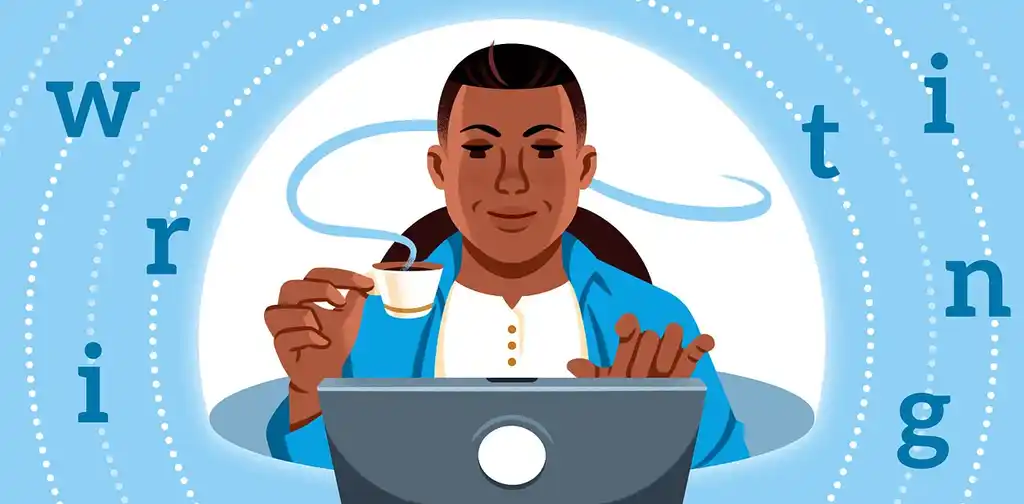
FREE FORMATTING APP
Reedsy Studio
Format your manuscript for print or EPUB with a single click.
Erika did an excellent job and definitely took the pressure off. However, for all my books after that point, I decided I would format them myself. I’d recommend that most independent authors do the same, given how relatively painless it is to format a book using software!
I used Atticus to format Seeking Haven, Braving Storms, and my Atlas Cliffs prequel, Aurora’s Amulet. I liked the interface and wanted the layout to be completely customizable, so it was a good choice for me. (Though I have also heard great things about Reedsy Studio!)
Q: What are the most common mistakes authors make when self-publishing?
Suggested answer
From my conversations with self-publishing authors, here are some points came up most frequently:
- Cover design - trying to do it yourself if you don't have an understanding of design principles (or skimping by paying someone peanuts). Whether we like it or not, everyone is judging everything and everyone. First impressions count and good (exceptional) design, attracts attention. I myself have been known to purchase books just because of a gorgeous cover (and hoping the story will be as good!).
- Formatting - poor formatting will absolutely degrade all your efforts. Subconsciously, readers shouldn't be drawn to the layout. An exceptional one doesn't stand out (by way of - "There's something "off" with this layout"), and allows the reader to focus on the book content. Excellent formatting reflects an excellent product.
- Marketing - clearly defining who your target audience is, means you have clarity when it comes to creating your marketing content. It helps you market specifically to those most likely to purchase your book/s and develop a loyal following. Writing your book was one part of it. The marketing is as important to get it out into the world and it requires effort and a good understanding of what your specific book needs, so that it can garner the right attention.
- Audience - ignoring your audience and not engaging with them (or hearing their feedback), can be detrimental. They're your main source of importance when it comes to your reach. Truly understanding who they are (as above in marketing - your target audience), is crucial. They will want to engage with you and will reciprocate with loyalty.
- Procrastination and Perfectionism - this is probably one of the greatest issues we face (across humanity to be honest), and it's also a natural part of being human, that we must overcome. Learning how to optimize your time, carving out when you're most productive and sticking to it daily, and tracking when and how often you show up, creates your lifelong "good" habit. We want to weed out the bad habits that stop us from creating the work. Waiting for "the right time" is a fallacy and something that will blindly rob you of precious days, months and sometimes years. Show up for your future self now and develop the habits (over goals), that will compound over time and create the results needed. It's the actual action-taking that gives you clarity. You just need to start and keep going. Know one gets it right in the beginning. Just don't quit on yourself.
- Editing - after your hard work of bringing your book to life, this is an extremely important part of the writing process. We are so close to the work that we can easily miss what is right in front of us. A professional editor can whip you into shape and saving you time, effort and will elevate the quality exponentially.
The way to success is to never give up. Remember why you are doing it and enjoy the process!
Leoni is available to hire on Reedsy ⏺
Something I have seen quite a lot lately in the self-publishing world: trying to do everything by yourself. Thinking that you just need Photoshop to make a cover, spell-checking software to edit, a dictionary and a bit of knowledge to translate. Never underestimate the value of a human professional who has spent years studying and then honing their skills. There is more to translation than substituting one word with another, just as there is more to a cover than a bunch of drawings and a title.
Find the right professional for you and your project, and work closely with them; you won't regret the expense, I promise. Also, yes, some types of stories and tropes are very popular right now, and those seem like a safe bet, as far as marketing and selling go - but likely there are a lot of similar books out already. In traditional publishing, variety is sorely lacking, because a tried and tested product seems safer; let's avoid repeating that mistake. Write the story that's in your heart and then strategically find your niche audience. You'll find them starved for exactly your flavour of creativity.
Mariafelicia is available to hire on Reedsy ⏺
One of the most common mistakes I see with self-published authors is setting unrealistic timelines for their publishing journey. Many writers plan their schedule far too tightly and only reach out to professionals—whether editors, designers, or marketers—at the very last minute.
This creates unnecessary stress on both sides: the author feels rushed and overwhelmed, while the professionals either have to decline the project or take it on under less-than-ideal conditions. In the worst case, authors struggle to even find available professionals because their preferred timeline doesn’t allow for the necessary lead time. Many professionals book out months in advance, so it’s wise to plan at least four months ahead—and in many cases, even that may not be enough time.
It’s also important to remember: as self-publishers, you are free to set your own pace. Unlike in traditional publishing, there is usually no external deadline or audience impatiently waiting for the book—especially when it’s a debut. That pressure often comes only from a self-imposed timeline. Instead of rushing, it’s far wiser to take the time to do everything properly, work with professionals without stress, and then launch the book when it’s truly ready.
Publishing a professional-quality book requires space for collaboration, revisions, and creative breathing room. When timelines are compressed, the process becomes about “getting it done” rather than “getting it right,” which can ultimately compromise the quality of the finished book. A thoughtful, realistic schedule not only reduces stress but also ensures that every stage of the process—from editing to design—has the attention it deserves.
Sabrina is available to hire on Reedsy ⏺
One of the biggest traps authors fall into when self-publishing is thinking that the hard part ends once the book is written.
In reality, self-publishing is as much about production as it is about creativity, and overlooking that side can leave even the best manuscript looking unprofessional.
I’ve seen too many writers skip professional editing, try to design their own cover, or leave marketing as an afterthought, and the results are usually disappointing. But just as important, and often less discussed, are the mistakes around the actual printing and publishing process. Authors frequently go with the first printer they find rather than getting at least three quotes, which is a sure way to overpay.
Others don’t ask whether VAT will be added on top of the quoted price, only to discover the true cost later.
Perhaps the most heartbreaking mistake is not asking to see samples of the paper and materials being used; the author waits excitedly for their book to arrive, only to be handed a flimsy volume on cheap stock that feels nothing like the work they poured their heart into.
The truth is, self-publishing is about producing a product as much as sharing a story. Taking the time to ask questions, compare options, and insist on seeing exactly what you’ll be paying for can mean the difference between a book that looks like an amateur project and one you’re genuinely proud to hold in your hands and which reflects the hard work you have put in as well as the hopes, naturally enough, of your client to hold a book in their hands which is a quality item.
Edward is available to hire on Reedsy ⏺
I've read a fair number of self-published books, and one thing I have noticed is that an unprofessional interior book design does impact my reading experience.
Interior book design is about all that invisible work that makes a book visually pleasant to read. If the lines break poorly, if the font is too big or too small, if the line spacing is too tight or too loose, if the font selection is one that's difficult on the eyes, especially after reading for a long time--all of this will subtly make your reader tired while reading, and, perhaps subconsciously, less likely to enjoy reading your book. They might not even know why! And by the end, they may be left with this feeling that they didn't want to pick up the book to read it as much as they have other books, which is not a feeling you want your readers to have, especially for something so easily fixable.
A well typeset book is unnoticeable. That's the point! Your reader doesn't notice the words on the page. Instead, they glide over them, immersed in the story. But a poorly typeset book stands out. Your reader's attention is pulled from the story again and again because the words are too squished together to read easily, or because there was one dangling line all by itself on the last page of a chapter and that looked odd, or because the font for the text messages was inconsistently applied.
Interior book design is an important part of the publishing process that I think a lot of self-publishing authors overlook.
Emily is available to hire on Reedsy ⏺
Two mistakes I've encountered through my work with self-publishing authors are definitely common, but perhaps not super obvious at first thought.
Mistake #1: Hoping to ultimately publish with a traditional publisher, but self-publishing first as a means to “test things out.”
Self-publishing should be a conscious and very intentional choice that you make because the process appeals to you, not something you do as a test drive. Once it’s published, it’s published. In fact, as a former slush pile evaluator, I quickly learned that a previously-self-published submitted manuscript was often a no-go for the publisher I worked with. Why? Well, any self-published copies of the book that had been already sold are sales the publisher might have otherwise been able to count on — chances are, if you’ve self-published your book, you’ve already gotten all your friends and family to purchase a copy. Those are all opportunities for sales no longer open to the publisher. So, if you want to self-publish, that's great! But make sure that, whatever you decide on, you're making an intentional and conscious choice.
Mistake #2: Consider your use of copyrighted works and get permission!
This applies to nonfiction and fiction works alike: If you are including previously published content in your book, do your research and understand what may require permission to use. If you're including lengthy quotations or extracts from books, short quotations to open your book chapters (i.e., epigraphs), song lyrics (yes, even just one line of a song), poetry, or photographs/artwork, you will need to seek permission clearance from the copyright holder to legally include that content in nearly all cases. I can tell you, based on several years of experience in permissions editing, that the process of figuring out who the copyright holder is, applying for clearance, hearing back, and finalizing the clearance can take MONTHS. And you may not even be granted permission, after all that effort! It can also be very expensive — publishing companies and record labels especially will charge you per usage and based on the amount you've used. So, do your research, know the risks, and decide accordingly.
Lesley-anne is available to hire on Reedsy ⏺
The most common mistakes authors make when self-publishing are: 1) Not focus-group testing yout title and subtitle, Check with Amazon for duplicate titles, and ask friends/colleagues 2) Not obtaining at least 2 endorsements, for front and back cover. 3) Not creating a publisher name for themselves Amazon. If you publish under your personal Amazon account, the "publisher" will be listed as "independently published," which can erode credibility. Instead, set up your KDP account in the name of a publisher you invent. There are many more, like poorly-designed covers and interiors, but these are of the most overlooked.
Michael is available to hire on Reedsy ⏺
Common mistakes:
Unrealistic or distorted view of public interest (Harsh, I know.)
Family and friends aren't fans--neither are paid reviews. It is important to be as objective as possible when assessing your book's popularity. I say this because many indie and early-stage authors believe they need what NY Times BEst Selling authors need, and that can lead to a lot of wasted time and money.
Acting as your own publishing company
It may seem like creating a separate name as your "publishing company" but the reality is, you don't yet have a company. This can be misleading to actual publishers that may be interested or contribute to the mistake mentioned above. These days, authentically doing everything on your own is more appealing to readers and publishers than the "fake it 'til you make it" strategy.
Starting a blog
If you aren't ready to commit to a regular schedule or writing blogs in batches, you don't need a blog on your website. Focus more on a simple and clear website and point of sale, then drive traffic to it. A blog isn't going to get you traffic unless you treat the blog itself as a business of its own.
Chad is available to hire on Reedsy ⏺
In terms of formatting tips for first-timers, here’s what I would say:
- Have your design assets ready ahead of time. Beyond just your cover, you will need a spine and back cover design for your print book — which your designer will also create. For the sequels to Wandering Souls, I even had chapter headings designed. I think they’re a nice aesthetic bonus:
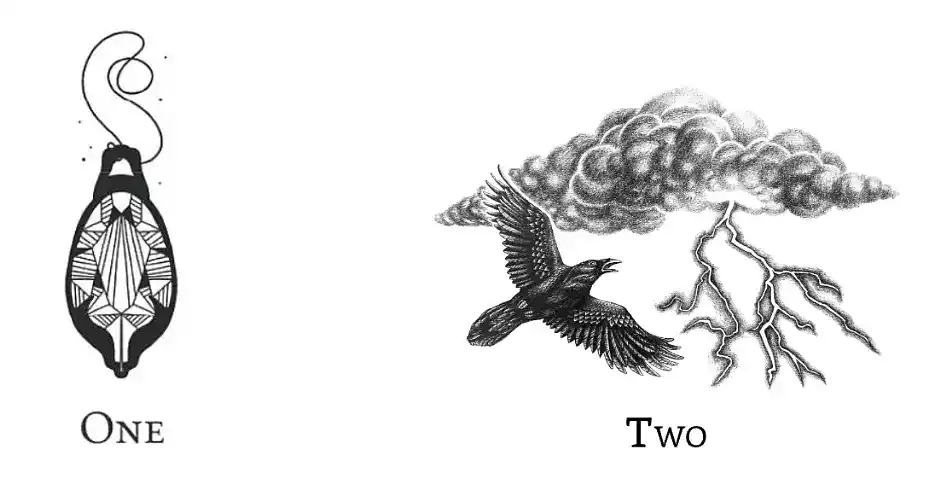
Art by Natasha MacKenzie (the pendant) and Whitney Law (the raven/storm).
-
For printing, keep in mind you’ll need a second file. I always format two files for each of my books: one for the ebook and the other for paperback. Once you have the PDF for your paperback (having selected your trim size, fonts, etc.), you’ll give the cover designer your final page count and they can finish formatting your book’s spine — i.e., making sure it’s the right size to fit all your pages.
- Don’t wait until the last minute. Ensure you hire a professional book formatter well in advance, or face the challenges of your chosen formatting software. Give yourself plenty of time for formatting… especially if it’s your first book!
6. Publish and distribute your book
After Wandering Souls was formatted, it was ready to publish… almost. I’d decided to put my book on Amazon and enroll it in KDP Select. But before I could set it live, there were a few more tasks to complete. I had to:
💼 Form my own imprint – You don’t have to do this, but I wanted my book to appear under an actual imprint rather than simply “Self-Published”. I formed Dawn Publishing by registering it through my province in Canada and creating a website.
A friend helped me with the web design, and I now use Dawn Publishing as my main author site! I love having my own imprint because it feels like a professional way to keep my books within one business, and because — silly as it might sound — it’s really bolstered my confidence as an author.
👩💻 Set my book’s keywords, categories, and blurb – As with my cover, I did a lot of market research here. I looked at competitors’ Amazon categories and used Publisher Rocket for keyword and category comparisons. I also thought about tropes and instinctively “searchable” phrases — both to use as official Amazon keywords and to otherwise sprinkle throughout my marketing materials.
Q: What are the key elements authors must get right when setting up their book pages on Amazon or other retail platforms?
Suggested answer
I find that the most overlooked component of an Amazon book page is consistently the author bio. Of course the cover design and descriptive text are essential, but so too is the About The Author section. Particularly for non-fiction where the prospective reader is seeking confirmation of why you are credible to write on your subject matter. Readers are looking for subject matter experts, and your thought leadership status is what will sell your book. Beyond that, in the age of AI, you need to show that you are a real person. Over an author's career, it is the author that is the brand, not any one book. Show us that your credentials are legitimate, and that you are a worthy authority on whatever you are writing about.
Chris is available to hire on Reedsy ⏺
I'll base my answer on Amazon, where majority of sales happen for most authors.
Book Cover
I'm aesthetically blind, but I still have a couple of valid criteria - readability and fitting a genre. On Amazon, your book cover is your business card. People need to get what it is about with just a single glance. Don't try to be smart, try to be clear.
In non-fiction, it usually means a huge title that can be read in a thumbnail size. In fiction, it is a big image that screams the right genre (think dragons for fantasy, starships for SF).
Book Title (and subtitle)
In case of fiction, the title may be catchy and cryptic, but it needs to be short. Often, it is just an article and a single word.
In case of non-fiction, you'd better spell out in capital letters what your book is about.
For all books, subtitles are a great place to stuff in some keywords ("a medieval historical novel").
Book Description
Your book description is your sales page on Amazon.
It is not a synopsis, God forbid!
For fiction, think Hollywood movie trailers - something that reveals hints of the movie, but its main objective is to get the attention.
For nonfiction, spell out the features and benefits, but in a way that pique curiosity (“The undervalued habit that everyone can practice and tune into their self-talk (would you believe it can create new brain cells?!)”.
Emphasize your credentials in book's subject matter.
Format your description properly. Have a clear headline - the first short line (think: blog posts titles) that is separated from the rest of the blurb's text. And don't scare a reader with "the big wall of text." This is Internet! Nobody reads huge paragraphs anymore.
Keywords
On Amazon, you have seven fields with 50 characters.
Use five of those to brim. Why? Because the interface doesn't reflect the mechanics of Amazon keyword system. Those "seven fields" are actually a one huge tag cloud. Any word from one field can be connected to any word from another field.
Use one field to give the clear 'elevator pitch' for a book ("military space marines book”).
Use the word 'book' in this field. It will connect with all the other words in your keyword tag cloud.
Use the last field trying to indicate the category your book fits best.
Categories
12 years ago, it was a good idea to hit some niche category, so you could easily claim the bestseller status. Not anymore. Relevancy is the key. If your book is fiction, don't put it in obscure non-fiction categories (and vice versa).
The more specific you can get, the better for your positioning and algorithm's understanding of your book, e.g. Romance ->Historical Romance ->Scottish.
Bonus: Pricing
Don't price your 100-page novella eBook at $9.99.
If you have a fiction series, price the volume #1 lower. It is your lead magnet, if readers like it, they will buy next volumes at higher prices.
Michal is available to hire on Reedsy ⏺
Your book cover is the first thing readers notice, and it has to grab their attention right away. But here’s the thing: your cover gets them to click, but it’s your description that actually convinces them to buy.
A great book description needs to spark curiosity, set clear expectations, and connect with readers emotionally. If it doesn’t make them feel like they need to read your book, they’ll move on to something else.
Other details, like editorial reviews, awards, or even strong reader reviews, can help seal the deal, but the description is where it all happens. Think of your cover as the invitation—it gets readers to the party. Your description? That’s the host that keeps them there and makes sure they have a great time.
Jd is available to hire on Reedsy ⏺
Furthermore, I wrote a strategic book description for the product page — a 150-to-200-word blurb that’s meant to intrigue readers without giving too much away. (Note: crafting the blurb is another area where I’ve since found it helpful to hire a professional!)
For context, here is the current blurb for Wandering Souls, with important elements annotated:
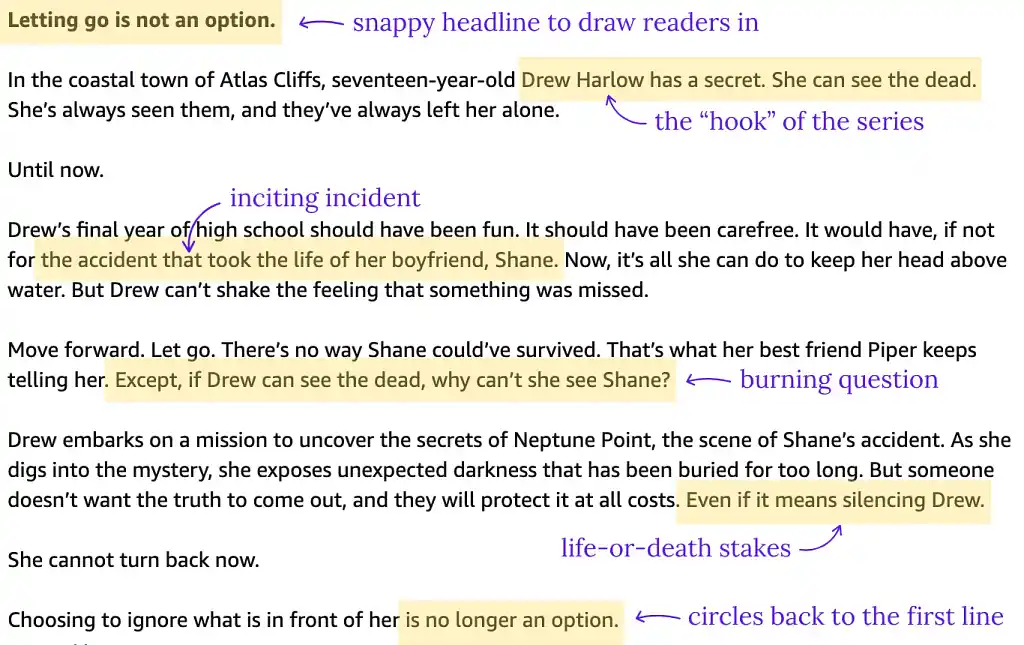
💸 Lastly, figure out the price and enable pre-orders – The last thing here was to set the price of my book. I set the ebook version as available “for free” via Kindle Unlimited (see below); otherwise, it was $3.99 to buy the ebook outright. As for my paperback, I used KDP Print to print individual copies on demand. Per their printing calculator, I ended up with a price around $16 (although printing costs have increased since 2022!).
You can also set up pre-orders at this stage. I’ve only ever done pre-orders a few weeks in advance of my launch, or a month at most. I prefer doing it this way so I can upload my book on my own time, without the pressure of an Amazon deadline.
Amazon exclusivity vs. “going wide”
As mentioned, I published my ebook through Amazon. That is, I didn’t “go wide” through other digital retailers like Apple Books, Barnes & Noble, etc.
Q: What are the crucial steps to successfully publishing a book on Amazon, from manuscript preparation to marketing?
Suggested answer
Publishing a book on Amazon comes down to two key components: a high-quality book and reaching the right readers. Think of it as creating a polished final product and ensuring the right audience sees it.
Your book cover is your first impression—it should clearly convey the genre and instantly appeal to your target readers. Next, your description should emotionally connect with potential buyers, drawing them into the story and making them want to hit "Buy." Adding credibility factors like Amazon reviews, editorial reviews, or awards can help reinforce their decision.
Pricing is another important step. It needs to align with what readers expect in your genre while leaving room to adjust as your book gains traction. Finally, traffic: you’ll need a plan to bring readers to your book’s page through advertising, promotions, or organic efforts like email lists.
Each of these elements works together to create the best possible experience for your readers and give your book its greatest chance at success. I work with my clients to ensure all these pieces are aligned and optimized, giving their books the boost they need to stand out on Amazon.
Jd is available to hire on Reedsy ⏺
This meant I could enroll my ebook in KDP Select, a program that offers advantages to Amazon-exclusive authors. And the biggest advantage of KDP Select is getting your book on Kindle Unlimited: a reader subscription service that pays authors based on page reads, rather than requiring every reader to buy the entire book.
In short, I started out Amazon-exclusive for simplicity’s sake, and have maintained it because I get a lot of readers on Kindle Unlimited. Most of my author income comes from KU! That said, I think weighing up Amazon exclusivity vs. going wide is a very individual choice. It certainly makes sense for some authors to go wide depending on their region, genre(s), existing readership, and other factors; it’s just not for me right now.
Also, print books are a different story. You’re still considered Amazon-exclusive as long as your ebook is exclusive to Amazon — meaning you can distribute print books through other means if you wish. So in addition to KDP Print, I also print and distribute my paperbacks via IngramSpark, which is a book distributor that many physical stores use.
Working with bookstores
A quick interlude on this topic: to get my books in physical stores, I basically just reach out to the managers and see if they’re interested. If they are, then they’ll stock some copies!
These days, I mostly have contracts with local independent bookstores. I order author copies from Amazon at their wholesale price and have them delivered to the stores, or to my home and I bring them in myself. They’ll then pay me based on the sales, while also keeping a small percentage for themselves.
Q: What are the most effective ways for authors to begin monetizing their writing, particularly in the early stages of their career?
Suggested answer
At the beginning of your writing career, the best way to turn a profit is to be thoughtful and innovative when looking at your work.
Many new writers begin with self-publishing novellas or ebooks, which are inexpensive to produce and can be distributed to readers in rapid order.
Platforms like Smashwords or Kindle Direct Publishing permit the earning of royalties as well as developing a reader base.
Short stories appearing in literary magazines, anthologies, or contest publications also generate income and exposure.
Besides publishing, the majority of authors offer ancillary services—blogging, freelance, or ghostwriting—to generate a reliable flow of income and hone their writing skills.
Achievement in the beginning more likely comes from stability, reader engagement, and smart marketing: building a mailing list, establishing an internet presence, and cooperating with specialty communities relevant to your genre.
Money-making is never instant, but every action generates momentum toward a lucrative writing career.
John is available to hire on Reedsy ⏺
Take advantage of every single opportunity that comes your way in the beginning. Don't be too picky. If the front door is locked, go in the side door. Or find a window. I had great luck with blind queries in the beginning and that was before email, kids. I built many relationships that way, and most of all, keep believing in your talent, be agile, be diligent, and above all LEARN HOW TO SELL YOURSELF.
Bev is available to hire on Reedsy ⏺
If you are a non-fiction author you can use your book as a platform to get speaking engagements even before your book is published. Once it is published, ask the business you are speaking for to purchase books for each of the conference attendees and then include this purchase in your speaking "package."
Melody is available to hire on Reedsy ⏺
If by "best," we mean "fastest," then self-publishing is the way to go, since there're no gatekeepers, meaning no wait time. As soon as your book's done, you can get it up for sale. But if we mean best as in "long-term for your career," that becomes a fuzzier proposition because you need to weight the wait time, rejection, potential rewrites/edits, and possibility of never having something accepted inherent in traditional publishing against the prestige that still comes with making it into that world. It also depends what level of control you want for your work. You obviously get much more with self-publishing, but perhaps you'd benefit from the edit you might get from an editor at a legacy press. Lots of variables here, but my advice is always to be honest with yourself regarding your goals.
Legacy prestige is great and all—and, if it goes well, can be much more lucrative—but there's a lot to be said for having full control of your product.
Brett is available to hire on Reedsy ⏺
This is called “on consignment” and I’ve found it to be the best way to work with physical bookstores. It does mean I have to pay the upfront cost of ordering those author copies — but when they sell, I’ve found the profits are much better than when the bookstore orders through IngramSpark.
So while I still allow the largest wholesale discount for bookstores that really want to use IngramSpark, I no longer allow returns. With IngramSpark, returns are a cost to the publisher — so when you publish independently, you are the one responsible for the return charge. I never want to take on that risk, and have found the consignment strategy tends to work out better for both me and the bookstores.
7. Market it on social media and beyond
Now for the last step of this process: marketing your book. Well, I say “last”, but marketing is really a constant process — you should ideally be thinking about it before, during, and after you publish any given book.
It’s also a bit of a shape-shifting beast. Just when you think you've found a post style that works, the algorithm changes and you need to adjust. But my motto is, never quit… so I try to approach book marketing with the same vigor and versatility as the rest of the publishing process.
Social media marketing
When I first published Wandering Souls, I was barely active on social media. How times have changed! These days, social media is a crucial component of my marketing strategy, and I try to post something almost every day.
I’ve found thriving reader communities on TikTok and Instagram, and do my best to engage authentically, always keeping readers in mind. I try to think… As a reader, if I’m scrolling, what will catch my attention? What posts and reels will make me take notice and actually read the book?
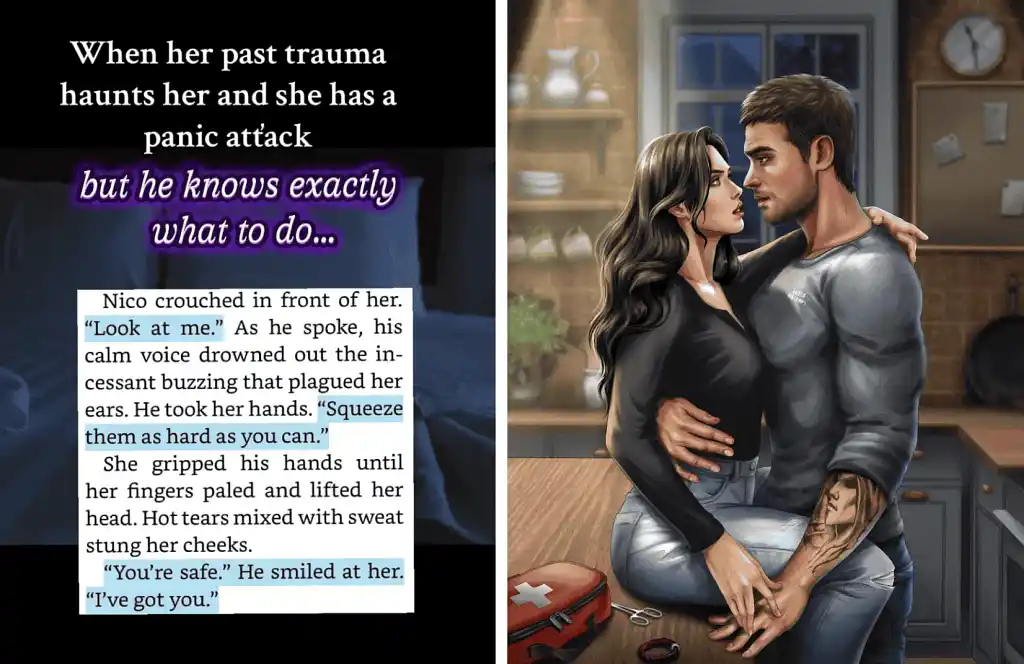
Character art by Anastasia Mirolubova.
One thing I’ve observed is that readers love seeing the emotion in my stories, so I’ll often post excerpts of emotionally intense scenes (like the one above). I also post a lot of character art — again, it has paid to invest in these additional designs for my books!
I’ve also noticed that people love memes. Some of my most successful posts are “memeworthy” videos where I touch on my experience, or use funny clips to draw attention to my books:
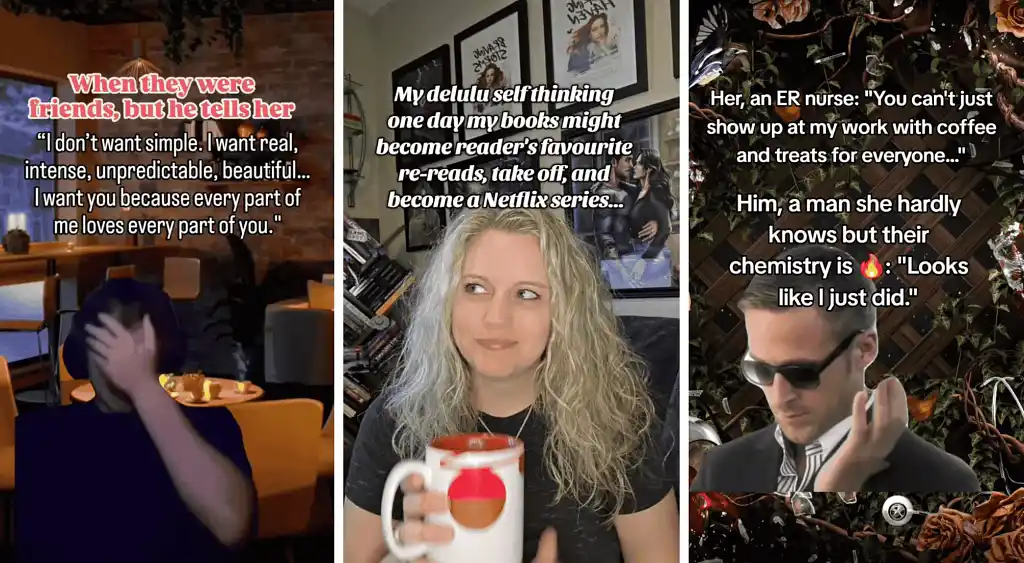
Of course, the nice thing about social media is that there are so many ways to participate. You don’t have to post as frequently as I do, or even use the same platforms; just find some platform where you feel comfortable. I personally love TikTok and Instagram because they allow me to market my work and myself in an authentic way.
But they’re not for everyone… and luckily, if you’re truly social media-averse, there can be other ways to market your book effectively.
Email promotions and getting reviews
I’ve done a good amount of email marketing for my books as well. I send out my own monthly newsletter for readers, and I’ve used services like Written Word Media to promote my titles when I’m running free or discount promotions.
Q: What topics should authors cover in their newsletters to keep readers engaged and build a strong following?
Suggested answer
Authors can write about a lot more than just their book! Ideas to write about are:
- Top 10 favorite books - Write a blog post about your ten favorite books and then share it with your newsletter audience.
- Behind The Scenes - This is a broad category. You can write a newsletter about how you got the idea for the book, or about how certain characters came to be, their motives or any backstory that may not have been mentioned.
- Appearances and events - This should go without saying, but letting your audience know about any scheduled appearances in person or online is great to share with your mailing list.
- Ask them something! - Make your audience feel important and seen by asking for their input on something. Make sure it's something that you really want to know because the public can sometimes surprise you!
- In Depth Bio - You can write a more in-depth bio and share it with your audience. This pulls back the curtain and allows your fans to learn more about you, further strengthening their interest and trust in you / your author brand.
- A Short Story - Write a quick story and share it with your subscribers. Giving away free content is critical to gaining and keeping customers/fans these days.
This is just scratching the surface. I hope this has sparked some ideas of what authors can write newsletters about.
Chad is available to hire on Reedsy ⏺
I also had an early stroke of good fortune with Wandering Souls; soon after publishing it, I managed to land a BookBub Featured Deal! For those who don’t know, this promotion is a bit of a golden ticket for indie authors. If your book is chosen, BookBub will promote it to all their subscribers in your book’s genre (which can be a million or more people!). However, there is a cost for the author — mine was around $300, and I believe it’s more expensive today.
Still, that 2022 promotion helped me hugely. In the five days it was running, I got over 10,000 free downloads of Wandering Souls, and it really got the word out about my debut:
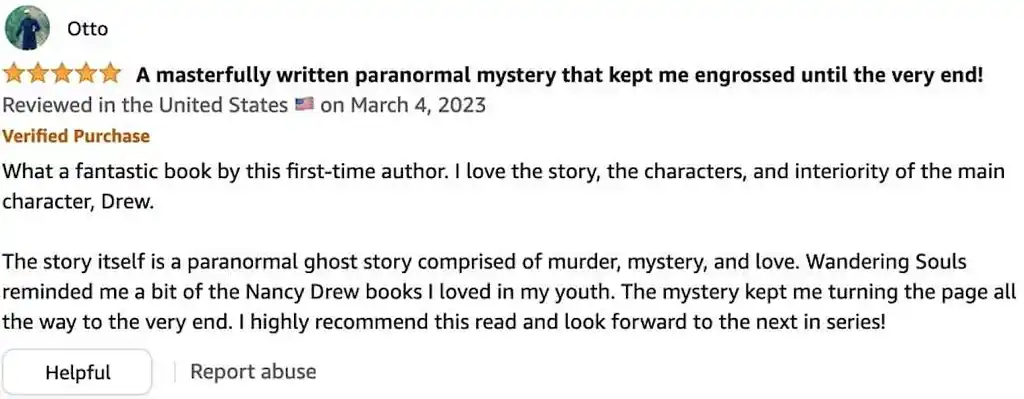
And BookBub is far from the only way to get reviews for your book. On that note, the last “big thing” I’ve done on the marketing side was build an amazing author street team to help with this.
My street team consists of readers who get ARCs whenever I release a new book, so they can leave early reviews on Amazon and Goodreads — and that way, I get to launch with existing reviews. Members of my street team also create and share social media posts, tell their friends about the books, etc. They’ve been tremendously helpful to my publishing endeavors, and I’m so grateful I took the plunge and started working with them.
Indeed, perhaps this is a good note to end on: the importance of sharing the joys, stresses, and responsibilities of publishing a book with others — whoever’s “on your team”, so to speak. I can’t overstate the value of this kind of connection and support.
There have still been many times I've felt discouraged, or as though I'm failing… but honestly, there is no quitting being an author for me. At the heart of this work is my unequivocal love for storytelling, and I will continue to write and publish books as long as I have that love.
For those who feel this same passion, I hope that hearing about my experience has inspired you to make a start. Remember: if you can get through that first draft, you can get through anything — especially with the help of high-quality professionals, great friends, and loyal fans.
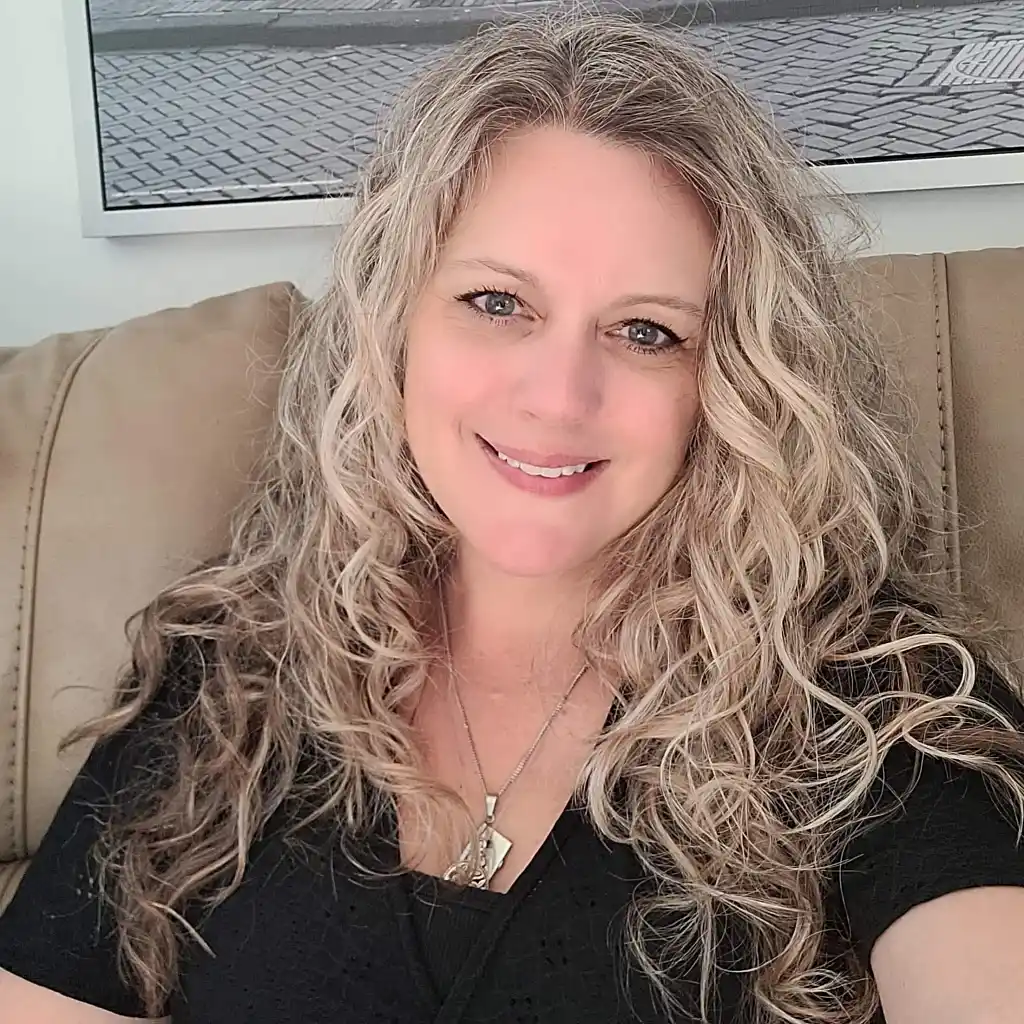 Angela van Liempt is a small-town girl with big dreams. Romance, yearning, and love will always be woven into her stories, and after completing a young adult paranormal mystery series, she’s excited to embrace a new genre. The Willow Grove series launches in October with book one, Shattered Secrets Between Us. This will be her debut adult contemporary romantic suspense with a mafia romance twist… along with a dose of spice.
Angela van Liempt is a small-town girl with big dreams. Romance, yearning, and love will always be woven into her stories, and after completing a young adult paranormal mystery series, she’s excited to embrace a new genre. The Willow Grove series launches in October with book one, Shattered Secrets Between Us. This will be her debut adult contemporary romantic suspense with a mafia romance twist… along with a dose of spice.
A lover of the ocean, full moons, and sunsets, Angela would choose to be barefoot on a beach any day over big city life. Escaping into fictional towns with characters who feel like real people is one of her favourite pastimes. She is the author of the four-book Atlas Cliffs paranormal romance series and, as mentioned, the upcoming Willow Grove romantic suspense series. Angela has received over 50,000 downloads of her books and has over 10,000 followers on TikTok. You can subscribe to her author mailing list here and find her social media accounts here: Instagram / TikTok / Facebook. Thanks for reading!
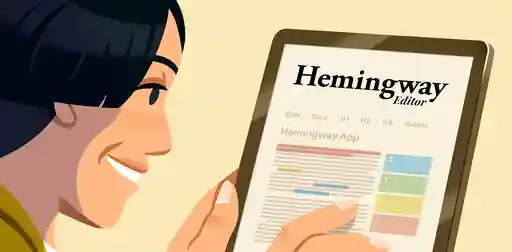
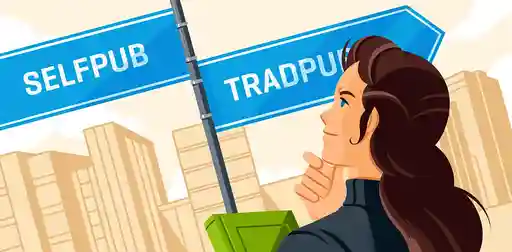
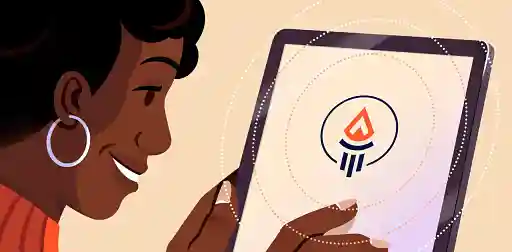




1 response
Rick Pacal says:
19/02/2020 – 19:08
Great information here. I really appreciate these tips on self-publishing. I have completed 13 short stories and am currently writing my 14th, with a 15th on the horizon with an idea. When they're all finished I hope to self publish. Thanks to your suggestions, I will go back to my first story and begin editing once again. Since my book will be a compilation of 15 short stories, I don't have a title for the book as yet. Perhaps it will be the title of one of the stories...or something else. My grandson is a pretty good artist/cartoonist and I might call upon him to design the jacket cover. Once again, thanks for all your help, advice and suggestions.